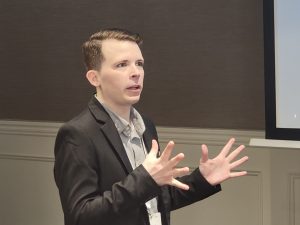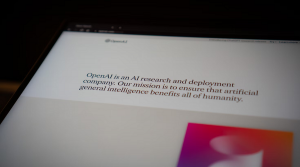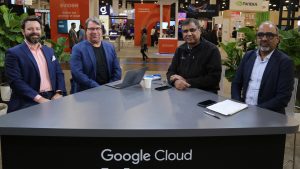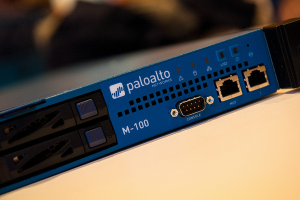The Real Story Behind Cord Cutting Numbers
The litany of posts and pontifications about cord cutting continues unabated, yet few people take the time to actually look at what’s really going on. The Washington Post’s Rob Pegoraro recently touted the benefits of ditching cable, but in the same breath admitted that it works best for people who a) don’t watch much TV, b) live in an area with great OTA reception, c) don’t watch live sports much, and d) don’t mind relying on DVD rentals to catch first-run movies.![]()
Like most who extol the virtues of cord cutting, Pegoraro also cited cord cutters as the reason for the loss of cable subscribers in two quarters of 2010. As I have previously noted, the real story was somewhat different.
This isn’t to say that the cable industry doesn’t face challenges from online video. It’s just that the challenge is somewhat different from what’s being reported. Occasionally, in all the cord-cutting froth, you have someone actually takes time to think it through and get it right. Such is the case with Nielsen’s Howard Shimmel. He cites two things that are clearly going on, and when added together, paint a picture of the real challenge cable faces.
First, Shimmel notes, there is a lot of “cord swapping” taking place. That is people will drop one MVPD and switch to another to get a better deal. That results in headlines that show cable declines, but gains by other providers, those usually add up to a net gain in subs.
Second, Shimmel notes the role that age plays in many of these numbers. Shimmel cites figures that show consumers age 25-34 are often choosing online video as their media of choice. Shimmel says these people are choosing to skip cable because of economics and lifestyle choices.
This is what I referred to in the post last September (linked above) as the lifecycle dynamic that affects cable. Most of the subscriber shift in cable comes at the opposite ends of the age spectrum. As older subs die, they are replaced by younger subs connecting for the first time.
However, many potential subs in the lower age bracket weren’t becoming cable customers even before OTT options came along. The lifestyle Shimmel refers to keeps them out of the active audience because they are often not home to watch TV. They fit into Pegoraro’s model of cord-cutters, but rather than cutting the cord, they were never attaching the cord. Now, they’re attaching a different cord.
In a more traditional model, those same young consumers may have had no pay TV service at all since it didn’t make sense to pay for TV you didn’t watch. As those younger consumers age, get married, spend more time at home, and have kids, they would normally become your traditional cable household.
That disconnect in media viewing habits is apparent when you consider the average viewer consumes 279 minutes of online video per month (roughly 4 ½ hours) but consumes nearly 160 hours of television. Those numbers are different by age group but include viewers like me who don’t replace TV with online video, but complement it instead.
So the real question, based on the lifecycle dynamic and the availability of new over the top services, is what happens when those people begin to age. Will they eventually look to cable for more viewing options than are afforded them by OTT services? Or will they be content with what they have? That is a much more difficult question to answer given the nascent state of the OTT market.![]()
It may be years before we see the actual effect of OTT plays on cable. However, given multichannel video is probably close to 100% of the market it will ever reach, it’s likely that there will be sub loss as older consumers leave the market and younger viewers don’t convert.
Another variable that will have significant impact is the differing capabilities of the platforms that are developed to compete and how well they complement the business models of the content producers.
As an example, I own an Apple TV and a Roku box. The content available on the two is dramatically different. I have been much happier with the Apple TV than the Roku. I could make the case for sticking with Apple over the long term, but the ROKU could never support my family’s viewing habits. We simply don’t watch that much cricket.
That said, the content on Roku is much cheaper than the true a la carte pricing of Apple. For that reason, content owners will likely prefer the Apple model over time.
With regard to the younger consumers, my personal expectation is these people, having had access to good content via OTT services, will actually be more inclined to look for more programming, and more entertainment options as they age. Just as someone who had broadcast or basic cable would move to cable or premium channels as they got older, today’s OTT customers may easily become tomorrow’s cable customers as they look for larger packages of content at a bundled price.
The challenge for cable will be to a) focus on premium content, b) protect that content, and c) differentiate its product from whatever else is out there.
HBO and Showtime have demonstrated that premium content delivered to smaller audiences is a viable business model. Shows like Sex and the City, Entourage, Dexter and Californication are only available to a subset of cable subscribers, but have a much larger place in the broader content landscape than those numbers would typically justify.
In other words, cable needs to return to its original business model – more exclusive, more engaging, and more valuable content than what is available for free elsewhere.
[Cross-posted at Digital Society]
A message from John Furrier, co-founder of SiliconANGLE:
Your vote of support is important to us and it helps us keep the content FREE.
One click below supports our mission to provide free, deep, and relevant content.
Join our community on YouTube
Join the community that includes more than 15,000 #CubeAlumni experts, including Amazon.com CEO Andy Jassy, Dell Technologies founder and CEO Michael Dell, Intel CEO Pat Gelsinger, and many more luminaries and experts.
THANK YOU













